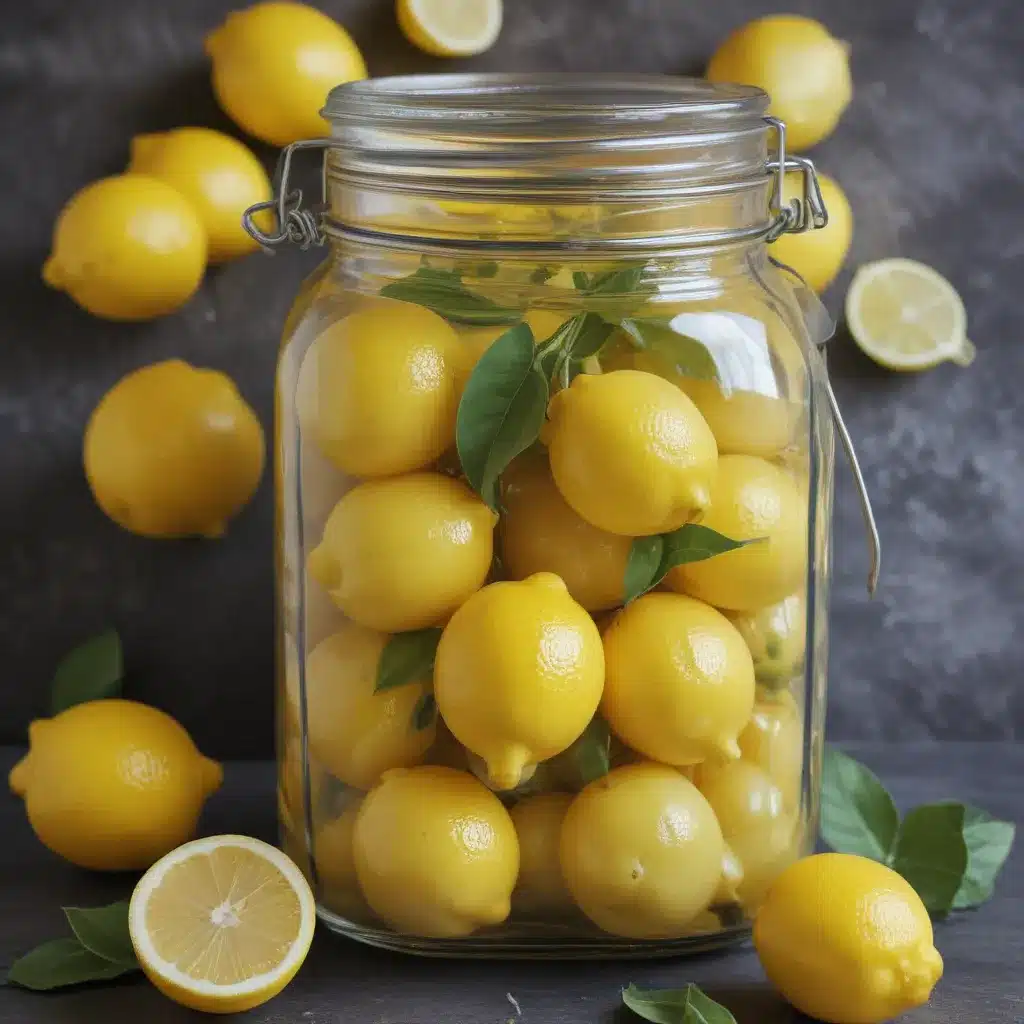
The Secret Weapon in North African Cuisine
You know, I’ll never forget the first time I tasted preserved lemons. It was at this little Moroccan restaurant in New York City, and I was hesitant at first – I mean, how different could they really be from regular old lemons, right? Boy, was I in for a surprise.
One bite of that tagine, and I was hooked. The depth of flavor, the salty-tart punch, the subtle umami notes – it was like nothing I’d ever experienced before. I instantly knew I had to learn how to make these magical little orbs of sunshine for myself.
So, I did some digging, and what I discovered was a culinary treasure trove. Preserved lemons, it turns out, are a staple in North African cuisine, and for good reason. They’re the secret weapon that can take your cooking from “meh” to “magnifique” in no time.
What are Preserved Lemons, Anyway?
Let’s start with the basics – what exactly are preserved lemons, and how do they differ from their fresh counterparts? Well, my friends, preserved lemons are essentially lemons that have been cured in a salt and lemon juice brine, transforming them into a powerhouse of flavor.
As Nisha from Rainbow Plant Life explains, the process softens the peel, mellows out the bitterness, and concentrates the lemon essence, resulting in a unique flavor profile that’s hard to replicate with just fresh lemon juice or zest.
It’s like taking a regular lemon and turning it up to 11 – you still get that bright, citrusy punch, but with an added depth and complexity that’s simply irresistible. And the best part? A little goes a long way, so a single jar can last you for months, elevating all sorts of dishes with its magical powers.
Diving into the Deliciousness
Okay, so now that we know what preserved lemons are, let’s talk about how to actually use them. The possibilities are endless, my friends, and I can’t wait to share some of my favorite ways to incorporate these flavor bombs into your cooking.
Stews and Tagines and Soups, Oh My!
Perhaps the most classic application for preserved lemons is in hearty North African stews and tagines. Nisha suggests adding a tablespoon or so of the chopped peel to dishes like her Vegan Chickpea Tagine, where it infuses the whole dish with that unmistakable brightness and depth.
But it doesn’t stop there – preserved lemons can work their magic in all sorts of soups and stews, from lentil to minestrone. Just a small amount can elevate the flavors and add a subtle complexity that’ll have your dinner guests wondering, “What is that amazing flavor?”
Dressings and Dips and Spreads, Oh My!
Now, if stews and tagines aren’t your thing, fear not – preserved lemons have plenty of other tricks up their sleeve. Take salad dressings, for example. Nisha’s preserved lemon vinaigrette recipe is the perfect way to add a little something special to your greens, with that tart-and-salty punch that pairs so beautifully with fresh veggies.
But the fun doesn’t stop there. Preserved lemons can also work wonders in dips, spreads, and even sandwich fillings. Try mixing some into your favorite hummus or yogurt-based sauce, or mashing them right into your avocado toast for a flavor twist that’ll have you wondering how you ever lived without them.
Grains and Legumes and Everything in Between
And let’s not forget about the world of grains and legumes. Nisha suggests tossing chopped preserved lemon peel into dishes like pearl couscous salads, lentil and chickpea dishes, and even rice pilafs – the salty-tart notes balance out the earthy flavors perfectly.
Heck, you can even take a simple can of chickpeas, toss them with some olive oil, lemon juice, and a sprinkle of preserved lemon, and you’ve got a delicious, protein-packed snack or side that’s ready in minutes. It’s like taking a basic ingredient and giving it a gourmet makeover, all thanks to the magic of preserved lemons.
The Art of Preservation
Now, I know what you’re thinking – “Preserved lemons sound amazing, but how do I get my hands on them?” Well, my friends, the good news is that they’re actually quite easy to make at home. As Nisha outlines in her step-by-step guide, all you need are some fresh lemons, kosher salt, and a little bit of patience.
The process is simple – you slice the lemons, pack them in a jar with salt, let them ferment for a few weeks, and voila! You’ve got a stash of preserved lemon goodness that’ll keep for up to a year in the fridge. And the beauty of it is that you can customize the flavors to your liking, adding in spices like cinnamon or coriander for a unique twist.
So why not give it a try? Whip up a batch of preserved lemons, and start exploring all the delicious ways you can use them to take your cooking to the next level. Trust me, once you taste the magic of these little flavor bombs, you’ll never go back to regular old lemons again.
And who knows – maybe you’ll even be inspired to plan a trip to El Bahia, the Moroccan restaurant in New York City that first opened my eyes to the wonders of preserved lemons. After all, what better way to immerse yourself in the flavors of North Africa than by indulging in a feast of tagines, couscous, and, of course, plenty of preserved lemon goodness?


